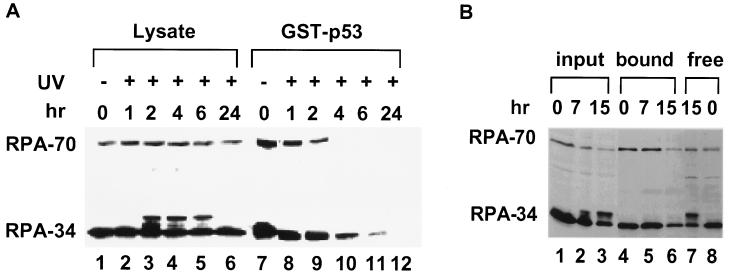Figure 2.
RPA from UV-irradiated RKO cells loses its ability to bind the activation domain of p53. (A) Cells were irradiated at 50 J/m2 and subsequently incubated in medium at 37°C as indicated before harvesting. RPA from these lysates was tested for binding to GST–p53-(1–73). RPA was detected by immunoblotting using monoclonal antibodies raised against RPA-70 and RPA-34. The species migrating slightly above the major RPA-34 band in the lysates from UV-irradiated cells represents hyperphosphorylated RPA-34. In this and the following experiments, 5% of the input lysates (lanes 1–6) and 50% of the bound fractions (lanes 7–12) were loaded on the gel. The 0-hr point represents the sample without irradiation. (B) RPA binding to p53 is not significantly affected by 20 Gy of γ-radiation. Lysates (lanes 1–3) were harvested at different times and used in the binding assay with GST–p53 (lanes 4–6). The supernatants of the completed binding reactions at 0 and 15 hr were included (lanes 7 and 8).

